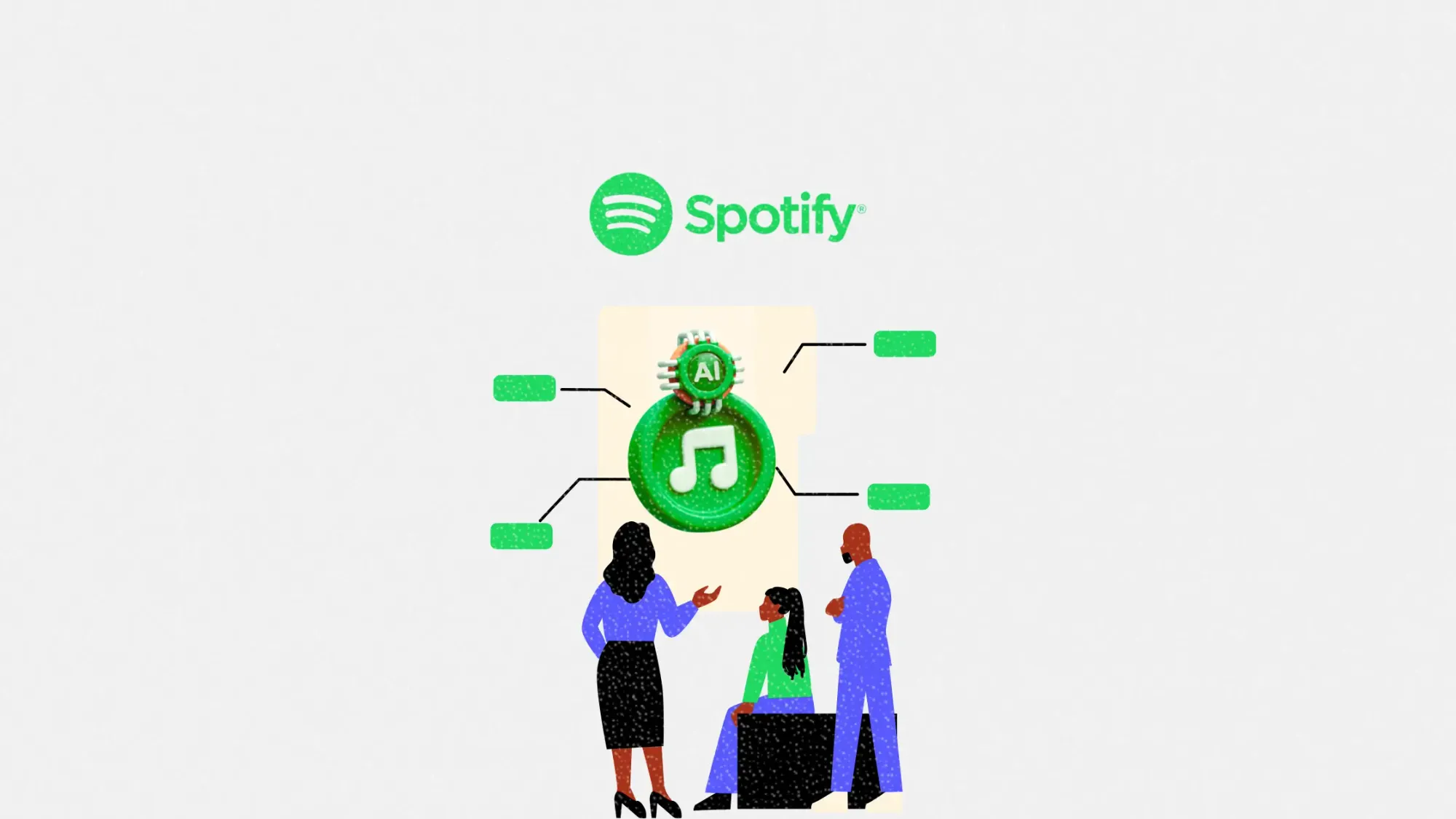Spotify joins forces with labels to push AI tools for artists
Spotify is building AI tools for music, without cutting out the artist. Here's why that matters for brand marketers

Spotify is officially getting into the generative AI race, but not in the way some might expect. Rather than launching a tool that churns out synthetic songs or voice clones, the streaming platform is aligning with some of the world’s biggest music companies to develop AI tools that prioritize artists, not replace them.
Sony Music Group, Universal Music Group, Warner Music Group, Merlin, and Believe are all part of this new collaboration, which is focused on “responsible innovation” in an industry increasingly shaped by AI. Together with Spotify, these rightsholders are working on tools that aim to support artists’ rights, protect creative control, and create new opportunities for fan engagement.
This article breaks down what Spotify’s AI plans actually include, why this matters in a world of deepfakes and copyright confusion, and how brand marketers can prepare for the evolving intersection of music, AI, and digital experience.
Short on time?
Here’s a table of contents for quick access:
- What Spotify’s AI partnership is all about
- Why this shift matters now
- How marketers can lean into the artist-first AI movement

What Spotify's AI partnership is all about
Spotify is forming what it calls an “artist-first” approach to AI development, supported by a strategic partnership with major global music groups. The goal? To build AI-powered tools that help artists, not algorithms, lead the creative process.
The initiative is grounded in four core principles:
- Upfront licensing agreements with rightsholders before launching tools
- Artist opt-in — no one’s content gets used without permission
- Fair compensation for participation and usage
- Strengthening fan relationships using AI to enhance, not automate, connections
Spotify has announced it is forming a dedicated research lab and product team to build these tools. The company will co-develop products with songwriters, producers, and performers in the loop, rather than retrofitting generative tech after the fact.
Music leaders seem aligned on the approach. Sony Music Group Chairman Rob Stringer stated, “We are pleased to be collaborating with Spotify to develop responsible generative AI offerings that broaden opportunities for artists and songwriters, whilst enhancing the music experience for fans. This is an acknowledgement that direct licensing in advance of launching new products is the only appropriate way to build them and demonstrates how a properly functioning market benefits everyone in the ecosystem and fuels innovation. We appreciate and applaud Spotify’s leadership at this critical period.”
Lucian Grainge of Universal also echoed a similar sentiment, “For several years we’ve been driving initiatives with our partners to put artists at the center of the conversation about Gen AI and have struck Artist-Centric agreements that establish innovative new vehicles to unlock the opportunities presented by this revolutionary technology. I commend Daniel, Alex and Gustav on taking these critical steps forward to advance this approach. It is essential that we work with strategic partners such as Spotify to enable Gen AI products within a thriving commercial landscape in which artists, songwriters, fans, music companies and technology companies can all flourish.”
Why this shift matters now
Generative AI has already triggered legal and ethical headaches across the music world, from fake Drake tracks to voice-cloning scams. By working directly with labels and rights holders, Spotify is signaling a sharp contrast from open-source music AIs that scrape the internet for data without approval.
This could be a defining move for the streaming giant, which holds an outsized role in shaping music consumption and monetization. While Spotify has previously leaned into discovery algorithms and personalized listening, this next phase puts human creativity back at the center of the equation.
It also helps Spotify position itself as a partner to the music industry, at a time when many in the creator community fear losing control or revenue to AI-generated knockoffs.
And this isn't happening in a vacuum. The platform recently launched a playful campaign called “Tunetorials,” turning ad strategy lessons into music tracks. It’s proof that Spotify is actively blending tech, content, and creativity to attract both marketers and audiences.
How marketers can lean into the artist-first AI movement
Spotify’s new direction offers some fresh cues for marketers who rely on music in their brand storytelling or audio ad strategies. Here’s how to make sense of it all:
1. Rethink branded music collaborations
If you're partnering with artists or producing original audio content, AI might soon play a bigger role behind the scenes. The key will be making sure creative control stays with the artist. Marketers can lean into Spotify’s tools (when they launch) to enhance reach or interactivity, but should avoid using AI to fully replace human expression.
2. Stay ahead on rights and licensing
Spotify’s emphasis on upfront rights deals and artist consent signals a new baseline for ethical AI use. Brands using voice AI, synthetic soundtracks, or generative jingles should take note, especially when navigating legal terrain around likeness, royalties, or content ownership.
3. Explore fan engagement tools
With artist-fan connection being a priority, Spotify’s AI tools may offer new ways for brands to engage listeners. Think exclusive content, personalized experiences, or co-branded campaigns that tap into fan emotion. Watch this space for partnership options that build loyalty without resorting to gimmicks.
Spotify’s move to co-create AI tools with music labels and for artists sets a new bar for how platforms can balance innovation with integrity. For brand marketers, this shift is a reminder that the best use of AI isn’t to automate creativity, but to support and amplify it.
As the line between artist, audience, and algorithm continues to blur, marketers should prioritize transparency, ethical content practices, and human-first storytelling. The tech will keep evolving, but so should your strategy.




